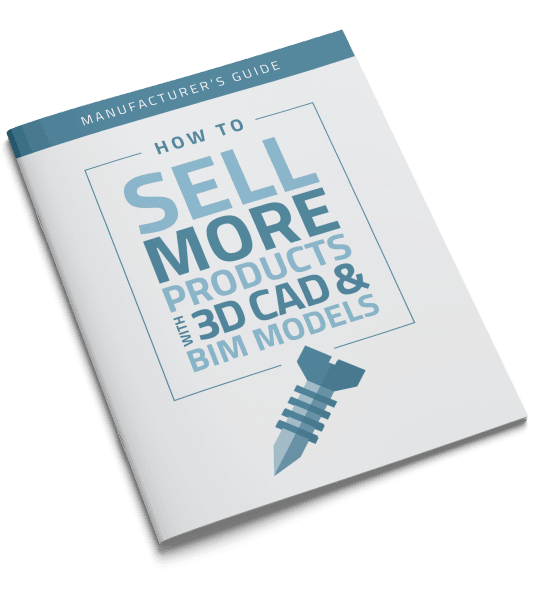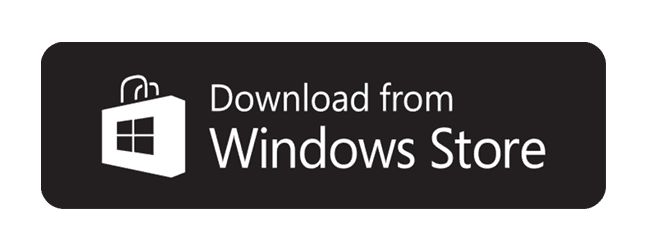The Ultimate Guide to Providing 3D CAD Models Online
Providing 3D CAD Models
How to sell more products by providing 3D CAD models directly to customers
Updated 8/2022
Industrial manufacturers know that providing 3D CAD models is a business necessity. Ten years ago, it was enough to provide a neutral CAD file to customers who called or emailed a request for product samples. Not anymore.
Today’s industrial buyers expect on-demand product data, instant CAD & BIM downloads in their native format, and high-quality product images – all at the click of a button.
Are you meeting these heightened expectations? How are you guaranteeing your company can provide CAD models to customers today and five years from now?
This page covers everything manufacturers need to know about providing 3D CAD models to customers.
Get This Page as an eBook!
Jump to the Chapter You Need:
A. Why Deliver 3D CAD Models to Potential Customers?
-
Industry Adoption of 3D CAD Models and CAD Catalogs
-
Are Manufacturers Keeping Up with Engineering and CAD Trends?
-
Trends Around 3D CAD Models You Can’t Afford to Miss
-
3 Reasons why CAD Models Have Been the Differentiator for Manufacturers
-
Customer Expectations for CAD Today
-
Where Is the Industry Heading Next?
B. How to Provide 3D CAD Models Online
-
Key Factors to Consider When Providing Online CAD to Customers
-
Never Share Your Real Engineering Models
-
Methods of CAD Delivery to Online Customers
-
Questions to Ask Before Providing 3D CAD
C. Getting the Most From 3D CAD Models
-
Reach More Users to Sell More Products
-
Power Your Sales Team and Distributor Network
-
Provide a Conversion-Driving Digital Experience
-
Integrate Your Configurator with Marketing Automation & CRM System
D. Take the Next Step Toward Providing 3D CAD Models
PART 1
Why Deliver 3D CAD Models to Potential Customers?
Providing CAD models requires a plan and a strategy
No one plays “Risk” before reading the rules of the game, and no one wins without devising a strategy.
Before you dive in and stick CAD models on your website, you need to understand the playing field. Let’s examine how the industry has adopted 3D CAD models and CAD catalogs over time, where manufacturers are today and where the industry is going next.
Industry Adoption of 3D CAD Models and CAD Catalogs
3D modeling is the #1 ranking CAD trend in terms of importance, adoption and usage, according to the Worldwide CAD Trends 2018/19 report.
Of all engineering and design respondents, 92% of respondents currently use 3D models, and the researchers expect the adoption rate to climb in the next five years.
Key Takeaway for Manufacturers: If you aren’t providing 3D models to customers, you are losing business to those that do.
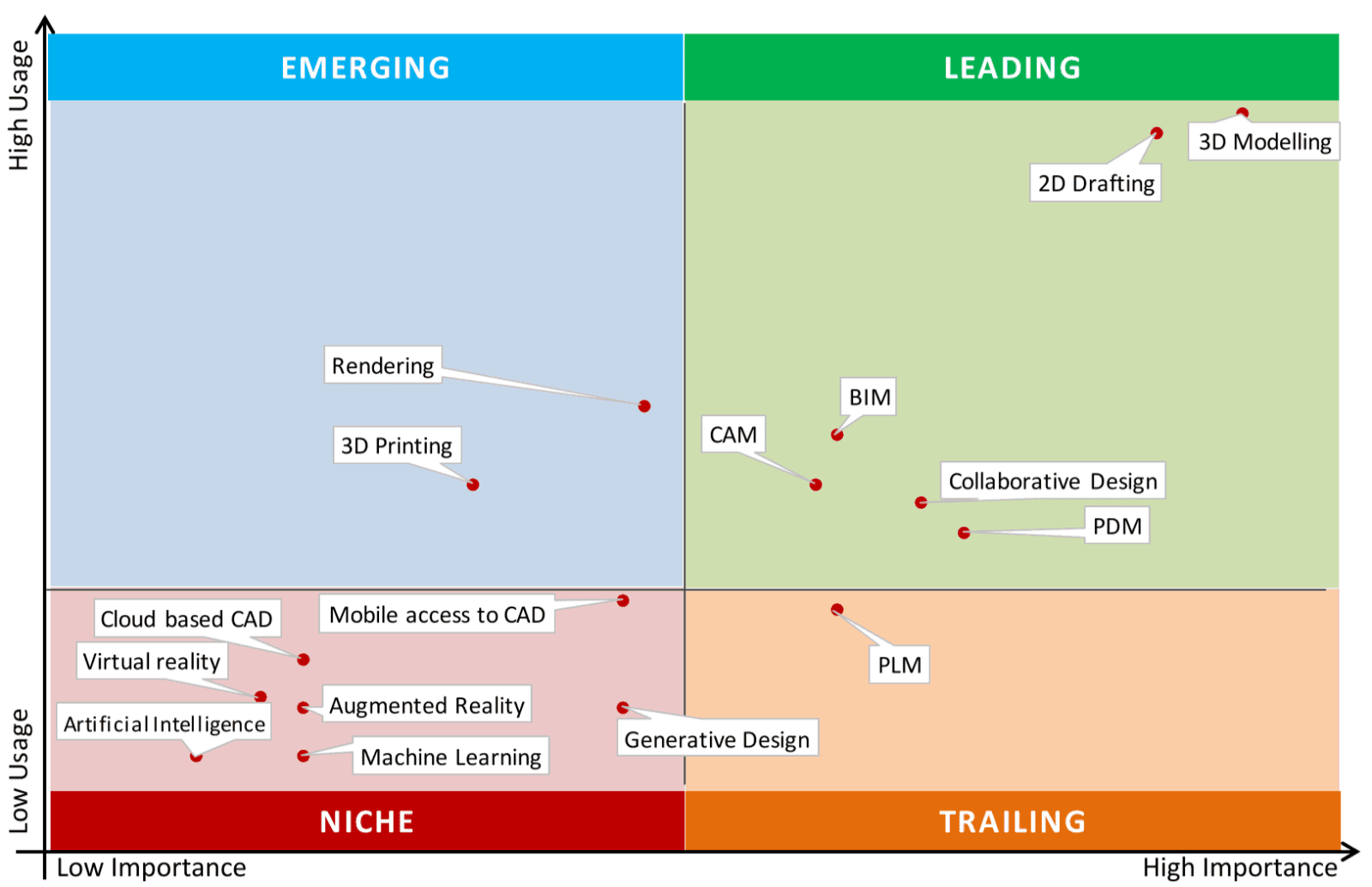 (image source: Business Advantage report, CAD Trends 2018-2019)
(image source: Business Advantage report, CAD Trends 2018-2019)
Are Manufacturers Keeping Up with Engineering and CAD Trends?
Forty years ago, 3D CAD software was new to the scene. Industrial marketers relied on product catalogs, magazine advertisements and mail-order product samples to get their products in front of engineers.
But today, their buyers aren’t there. Digitalization has changed the industry, but what have manufacturers done to change with it?
Computer programmer and entrepreneur Scott Brinker points out how the trends of technology and organizational change don’t line up. Buyers are fast to follow technology trends, but organizations are slow to adopt these changes and get stuck doing things the old way.
Technology changes exponentially; organizations change logarithmically.
– Martec’s Law, by Scott Brinker @chiefmartec
Many manufacturers do not readily adopt industry changes. You might ask, “Is providing 3D CAD products on our website really the lead-generation tool that fits our customers’ needs?”
Meanwhile, innovative companies are winning your business by meeting buyers where they are: with the current technology trend.
Today, there are cloud-based CAD systems, PDF data sheets with interactive 3D previews, and hundreds of different CAD software providers used by engineers and consumers of 3D data around the world. And next year more design engineers will access and use these tools from their smartphones.
Again, technology is continuing to evolve – is your business moving with it?

Read More:
-
Future-Proof and Backward Compatible: Ensure Your CAD Models Work for Every Customer, Forever
-
60 Years of CAD Infographic: The History of CAD since 1957
-
Future of 3D Cad Software and Sales Configurators: Once a Novelty, Now a Necessity
Trends Around 3D CAD Models You Can’t Afford to Miss
Since manufacturers first started to provide 3D CAD downloads to customers in the early 2000s, the overarching trend was straight forward: Make it easier for engineers, architects and designers to do their jobs.
For manufacturers, this meant the previous ways to deliver CAD to customers no longer made the cut. In 2003, manufacturers had two main ways to provide these CAD product models to customers:
- Export working STEP files of their products
- Partner with a CAD software tool
To give engineers and architects the access to CAD and BIM files they need today, you must do more than export STEP files of your products.
These are three important CAD trends you should watch in 2020:
1. Provide high-quality product data
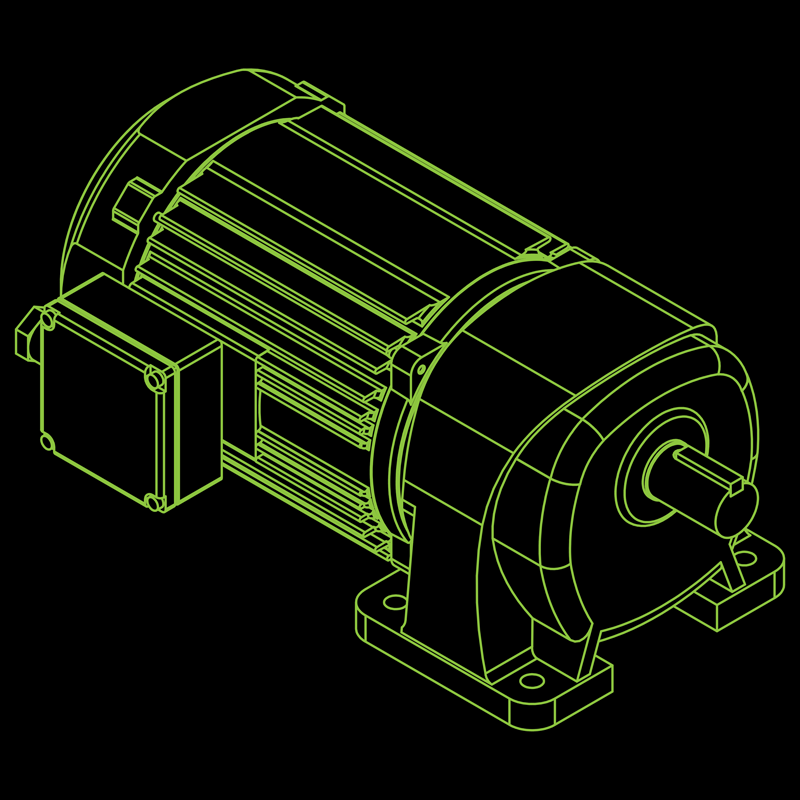 STEP files were a quick-fix solution to a growing problem: engineers needed on-demand product models, but most manufacturers were not ready to meet those expectations. These low-fidelity files allowed for engineers and designers to use a product model in their CAD system, but at a cost… STEP files don’t allow for the native exchange of parameters, design intent, and other important data that design engineers now expect with product downloads.
STEP files were a quick-fix solution to a growing problem: engineers needed on-demand product models, but most manufacturers were not ready to meet those expectations. These low-fidelity files allowed for engineers and designers to use a product model in their CAD system, but at a cost… STEP files don’t allow for the native exchange of parameters, design intent, and other important data that design engineers now expect with product downloads.
Also, they were often based on the manufacturer’s working CAD models, meaning another company could use the file to manufacture a counterfeit product.
Moving into 2020, manufacturers must provide native CAD model downloads to customers in their preferred CAD format, ensuring customers receive the product data they need and the necessary purchasing information, while protecting their valuable intellectual property.
2. Instant product configuration at customers’ fingertips
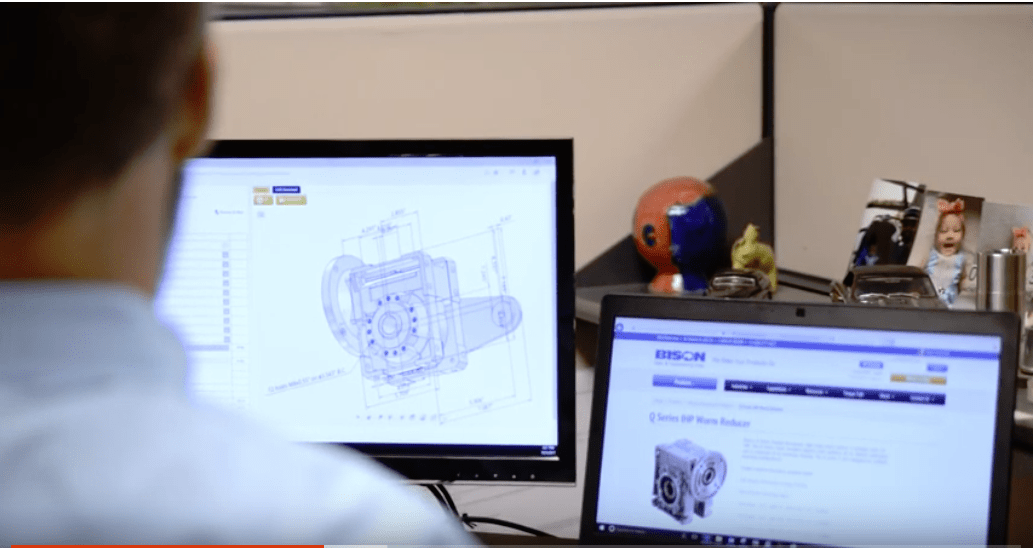 Long gone are the days when customers flip through a paper catalog and skim tables of product specifications. An online filtering system doesn’t cut it either. Engineers and architects expect a better experience online – they expect on-the-fly configuration.
Long gone are the days when customers flip through a paper catalog and skim tables of product specifications. An online filtering system doesn’t cut it either. Engineers and architects expect a better experience online – they expect on-the-fly configuration.
Engineers expect to find, configure and download a product from a manufacturer’s website within seconds. This means you must use technology that creates this experience for your customers. If you provide this, it’s a huge differentiator.
3. 3D product catalogs to deliver CAD to customers
As manufacturers understand the evolving needs and expectations of their customers, they often turn to the 3D product catalog as the trusted CAD delivery mechanism.
3D product catalogs provide the digital customer experience that engineers and architects expect while delivering the digital product models they need. This type of solution emerged in the early 2000s and has grown rapidly in popularity among component manufacturers.
Today, the industry is in the late majority stage, although some industry verticals adopted this faster than others. If you don’t have a 3D product catalog or equivalent solution, you risk being laggard and may see your product sales suffer for it.

3 Reasons why CAD Models Have Been the Differentiator for Manufacturers
Those manufacturers who make it easy for customers to get CAD & BIM downloads from their website have seen the benefits first-hand. They are the ones leading their industry toward a customer-focused, technology-driven future.
What makes 3D CAD models the key ingredient for industrial success?
Here are the top three ways in which CAD & BIM models have enabled manufacturers to climb the industry ladder:
1. Product configurators have a proven ROI.
If you’re a marketing manufacturer looking to drive more sales from your content library, free 3D CAD downloads should be your bread and butter.
“Brennan Industries doubled their online CAD downloads overnight after launching our configurator on their website. PFA saw a 99% customer adoption of 3D CAD models after implementing their catalog configurator. That’s significant to a manufacturer of any size,” says Doug Korneffel, CTO at CADENAS PARTsolutions.
![]()
2. Instant 3D downloads are a home run for digital customer experience.
Digital customer experience (DCX) includes all the digital interactions between the customer and a manufacturer. These interactions (such as ease of website navigation and page speed) help the potential buyer form an opinion of your company.
Your goal is to make it easy for the potential buyer to say “yes”. To do this, your website must have simple navigation, on-demand data access, product details and graphics, transparent pricing and more. Online 3D CAD and BIM models are an essential piece of this strategy that improves “ease of doing business” for manufacturing customers.
![]()
3. Manufacturers have more time to focus on product innovation.
By providing online CAD & BIM downloads to customers, manufacturers free-up time for their employees and let engineers do what they were hired to do in the first place: to build better designs.
“We never want our clients to worry about the digital customer experience for their CAD products,” says Korneffel. “We provide the 24/7/365 access to our clients’ products, enabling manufacturers to focus on what they do best, creating new products.”
See what manufacturers are saying about 3D CAD models:
“3D CAD model downloads are our best sales leads, so we knew we had to get this right.”
Aaron Hansen, Bison Gear and Engineering
“What really blew us away, was the adoption rate when we would provide application reviews. 99% of the time the design already featured a model generated by our online configurator.”
Mark Scanlan, PFA, Inc.
“We saw our downloads double overnight when we switched to the CADENAS PARTsolutions 3D CAD catalog.”
John Joyce, Brennan Industries
“Having CAD available on a website is a necessity today, however having the right products that are configurable, easy to access, fast and accessible on any device is the expectation of our customers.”
Bruce Hamper, Power Jacks
“The standard in our industry is getting CAD models online…
…We knew if we could make our products self-service from within our website, it would be much easier for customers to get CAD models of our products and to purchase from us.”
Christopher Nook, Helix Linear
“Engineers now have the ease and convenience of downloading the files themselves without having to take time out of their busy schedules to contact us. And it saves us the manpower of having to provide CAD models or prints on a one-by-one basis.”
Ken Wolcott, Qosina
“No more wait time! This new tool is all about convenience for our customers, enabling us to deliver the amazing customer experience we strive for.”
Majdah Bin-Salamon, Hunt Valve
Customer Expectations for Online CAD Today
It’s no secret that today’s architects and engineers want a remarkable customer experience. They expect to find a downloadable product model online, and they expect it to be easy to find.
That’s why DCX and online CAD & BIM models go hand-in-hand. As a component manufacturer, you need to understand what and how to best provide 3D downloads to customers. Then, you can use this knowledge to reach more engineers and planners and to drive more qualified leads and sales.
Here’s what you need to know about engineers’ expectations and behaviors:
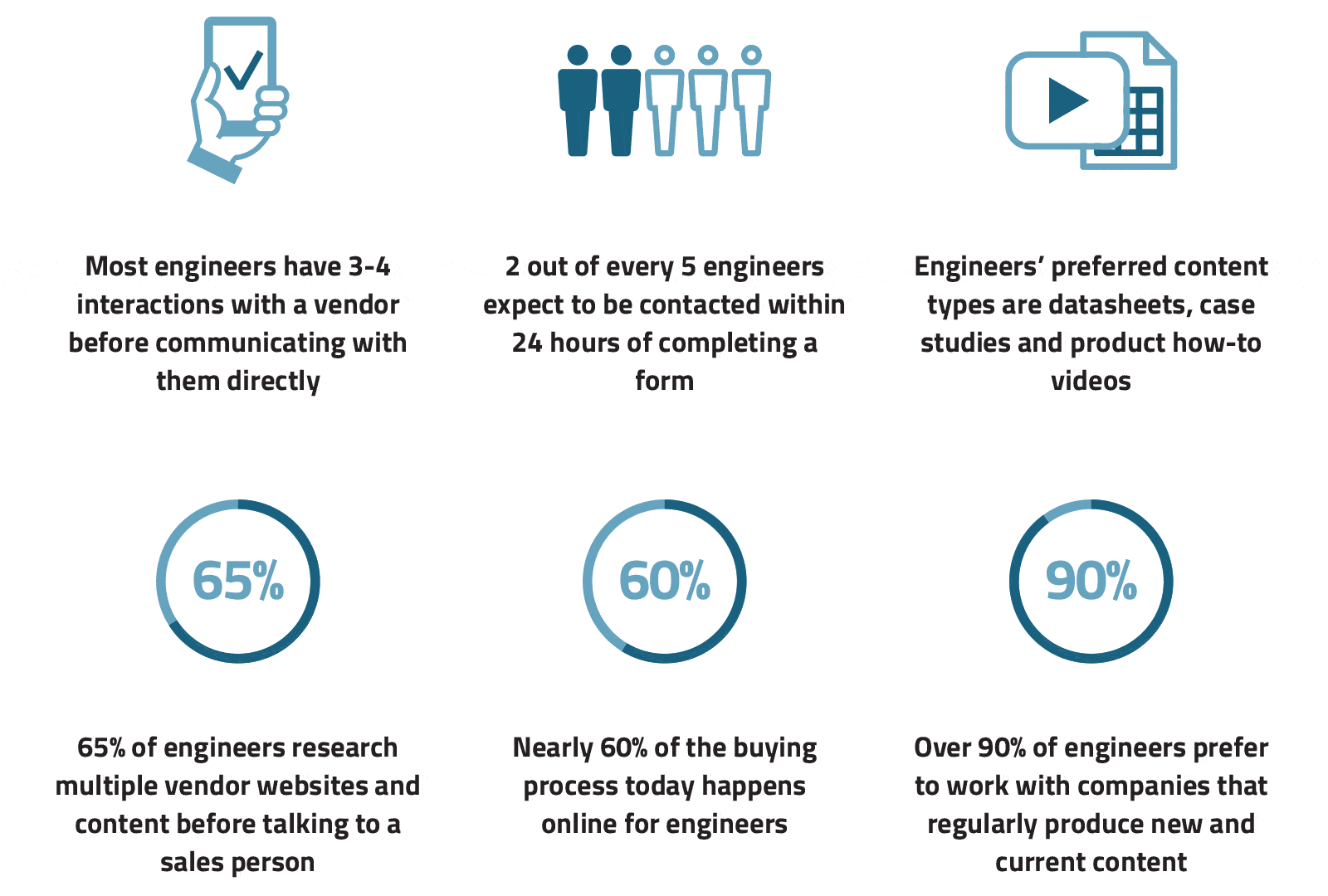
Where Is the Industry Heading Next?
As mentioned in the Business Advantage study, researchers expect 3D models to remain the top industry trend and to see even more adoption.
Artificial Intelligence (AI), machine learning and the Internet of Things are growing trends expected to impact the industry in the next five years. A better question to ask would be this: “How are 3D CAD models going to take manufacturers to the next level?”
The overarching trend that prompted the explosion of 3D CAD models in the mid-2010s is still relevant today. Only, it has a catchier name:
Personalized digital customer experience.
Why digital customer experience?
Buyer expectations don’t change just because they’re buying an industrial product. The expectations are the same: They want exactly what they want, when they want it, without having to wait. If they can’t get that, they will move on to the next manufacturer.
Component manufacturers must continue to find ways to make it easy for customers to buy their products. So, what is the best way to get this done?
Providing 3D CAD models to customers gives engineers the content they need and the buyer experience they want. That’s how you can set your company apart from your competition by providing a great digital experience and best prepare for the future of CAD modeling.
The next evolution of CAD
Already, the industry is evolving into a new realm of data analysis and digitalization Breakthroughs in CAD technology are changing the perception of what’s possible with product models – once again transforming the way engineers, architects and planners create and design.
Here are just some of the directions in which the industry is going:
- Design collaboration moves to the cloud
- Personalization for feature-rich products
- Simulation with digital twin and Industry of Things
- Intelligent design anticipates design errors and repairs.
High-fidelity 3D product models are the foundation for digital trends emerging in the industry. These are not in conflict with the product downloads that component manufacturers deliver today. Rather, these 3D product models serve as high-converting sales leads and digital assets to carry you into the future of design.
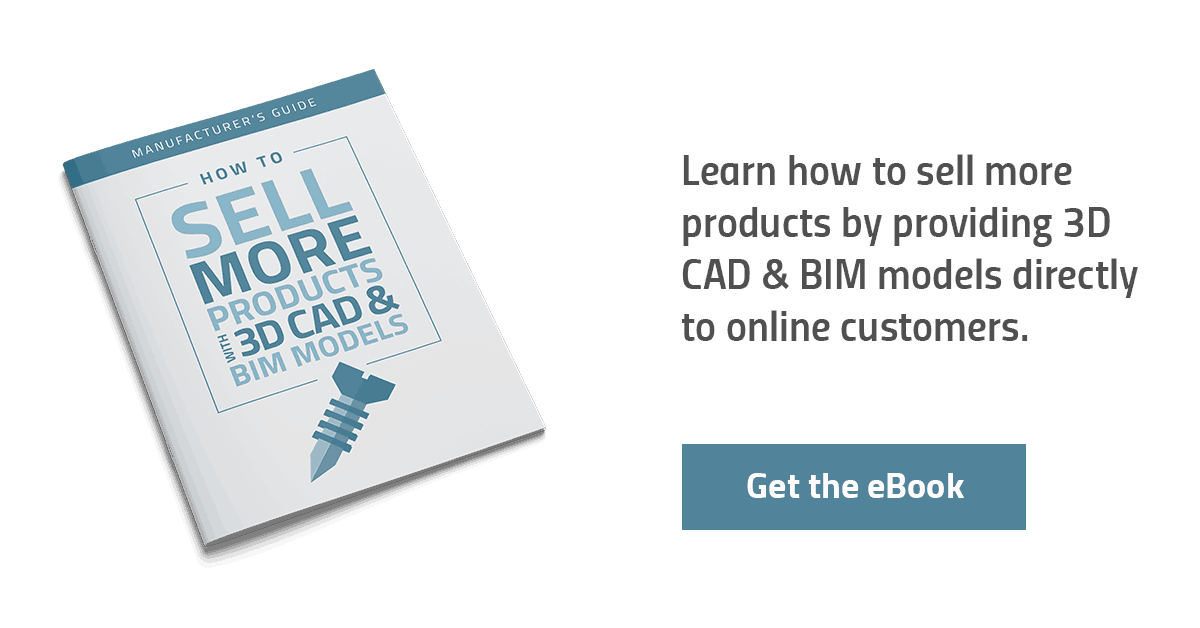
PART 2
How to Provide 3D CAD Models Online
How to provide 3D CAD models from your website – the right way. Now that everyone knows the game, it’s time to talk strategy.
By leveraging your knowledge of industry trends and customer insights, you can build a marketing and sales enablement strategy around 3D CAD & BIM models fit for your business.
Before diving into the methods for delivering CAD models, there are a few important factors you should keep in mind:
Key Factors to Consider When Providing Online CAD to Customers
Manufacturers know they need to provide CAD & BIM models to their online buyers. Before turning this initiative into action, you must take a step back and determine:
- The current state of your CAD data
- How you are going to deliver CAD to customers
If you already provide online CAD access, the factors listed below will help you evaluate how you can improve your online CAD deliveries.
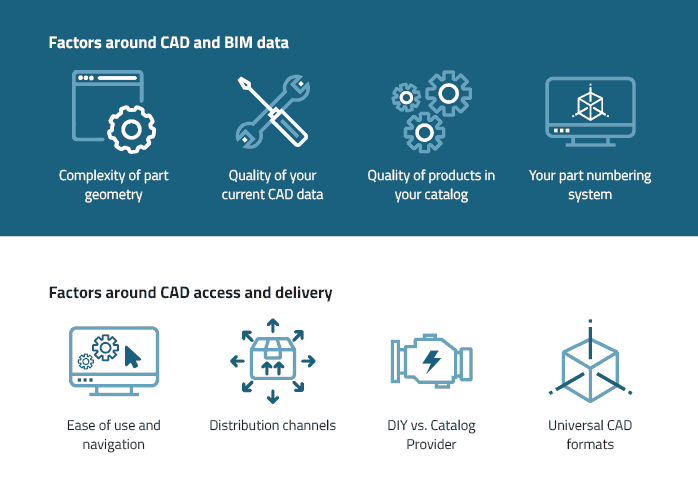
Never Share Your Real Engineering Models
“We’re afraid to let our 3D CAD models out the door because we don’t want someone copying our intellectual property.”
Our digital catalog experts hear this all the time. Manufacturers are afraid to give engineers and planners free CAD or BIM downloads because they think that gives away their proprietary data. We understand – protecting your intellectual property (IP) is extremely important, and manufacturers should never risk this just to keep up with industry standards.
Good news for manufacturers: there is a way.
Instead of giving customers the real engineering model of products, you can provide them with a “sales version” of the product as a CAD or BIM models.
“Sales versions” are low-level of detail models of the manufacturer’s products – they contain enough information to be useful but not enough to be copied and made for counterfeits.
Why re-build your CAD/BIM models?
This stripping of intellectual property does several positive things for the distribution process between manufacturers and design engineers.
- It creates a smaller model that engineers can test more easily.
- The smaller model is lightweight, so they can load and update quickly on a webpage.
- It protects the manufacturing company so others cannot copy their designs.
- They provide easy and accurate testing for design engineers and architects.
- They ensure the industrial creativity isn’t stolen.
How to Protect Your Intellectual Property (IP)
Both the engineer and manufacturer have a vested interest in protecting the IP of product models. Your company spent years building and fine-tuning your quality products, so don’t share proprietary engineering data. Here’s how to share product “sales versions” the secure way:
- Never share your actual engineering drawings online for anyone to use.
- Provide simple but accurate sales models of your products.
Read More:
-
3D CAD Models: How to Protect Your Intellectual Property Against Counterfeiting
-
No CAD Required to Share Product Data: Provide Interactive 3D PDF Data Sheets
-
Marketing to Engineers: What are Form Fit and Function models?
Methods of CAD Delivery to Online Customers
Let’s dive into the nitty-gritty of delivering CAD models online. There are four main methods for providing CAD or BIM product models:
- Email delivery
- DIY-hosted solution
- Neutral cloud
- Native cloud
While some solutions may blend these categories, understanding these four methodologies will help you gain a better understanding of how to provide CAD and which solution is best for your business.
1. Email Delivery
Most manufacturers who provide 3D CAD models to customers are familiar with this method. In fact, you have probably done this already:
The designer emails or calls the manufacturer to request a CAD model of a product. If the designer needs a custom model, he will likely have to send the project drawing and product requirements along with the request.
From there, that request goes to the manufacturer’s engineering department, where an engineer will find or create the model to email to the designer. This process can take anywhere from a few hours to a couple of weeks, depending on the project and the engineer’s workload.
Benefits of email CAD delivery
With this delivery option, you have 100% control over your CAD models and what you send to potential customers. This makes it possible for you to set your own boundaries for what product data you include (and don’t include) in those models.
Another benefit of this method is its affordability. If you’re concerned about short-term costs, you can still deliver CAD & BIM models to designers without paying too much more. In all likelihood, you already have CAD or online versions of your products. Therefore, you can work with the materials you already have in order to send a “sales version” of the CAD product model to potential buyers.
Drawbacks of email delivery for CAD models
Email delivery of CAD models is limiting and resource-heavy for the manufacturer. While this is seemingly the easiest method for CAD delivery, its benefits are also its disadvantages.
You are 100% responsible for your CAD delivery, which means the burden falls on your team to deliver product samples with the right information, in a timely manner, without giving away your intellectual property.
The cost savings associated with this delivery method are also misleading. With more CAD requests come more time spent away from the job you originally hired your engineers to do. You either hire someone to design product models for CAD requests or risk losing valuable engineering time from your team of busy engineers.
This method isn’t ideal for end-users and customers, either. Potential customers have to wait for you to send them the CAD file (which typically is not in their native CAD format) and stalls their projects.
See what manufacturers are saying about 3D CAD models:
“The standard in our industry is getting CAD models online…
…We knew if we could make our products self-service from within our website, it would be much easier for customers to get CAD models of our products and to purchase from us.”
Christopher Nook, Helix Linear
“Having CAD available on a website is a necessity today, however having the right products that are configurable, easy to access, fast and accessible on any device is the expectation of our customers.”
Bruce Hamper, Power Jacks
“Engineers now have the ease and convenience of downloading the files themselves without having to take time out of their busy schedules to contact us. And it saves us the manpower of having to provide CAD models or prints on a one-by-one basis.”
Ken Wolcott, Qosina
“3D CAD model downloads are our best sales leads, so we knew we had to get this right.”
Aaron Hansen, Bison Gearn and Engineering
“No more wait time! This new tool is all about convenience for our customers, enabling us to deliver the amazing customer experience we strive for.”
Majdah Bin-Salamon, Hunt Valve
“We saw our downloads double overnight when we switched to the CADENAS PARTsolutions 3D CAD catalog.”
John Joyce, Brennan Industries
“What really blew us away, was the adoption rate when we would provide application reviews. 99% of the time the design already featured a model generated by our online configurator.”
Mark Scanlan, PFA, Inc.
2. DIY-Hosted Solution for CAD content
Most manufacturers understand they need to provide instant 3D CAD models to their online customers, and they need to make that available on their website.
Many start with a home-grown CAD catalog.
Editor’s note: There is no configuration here! All products are static files in “catalog” format.
What’s a home-grown CAD model catalog?
A home-grown catalog is a company-made-and-supported application that a manufacturer uses deliver 3D CAD models to customers. This tool is often built by the manufacturer’s own CAD team and has a dedicated team or person who maintains, updates and facilitates the delivery of CAD & BIM product models to online specifiers.
Ease of use plays a key role in the catalog, as customers should be able to find and access the product models they need without the manufacturer’s help. A true product catalog needs logical rules built-in to the system. Each product needs a “recipe” that sets the parameters for what the user can configure based on what the manufacturer can build.
Benefits of the self-hosted CAD solution
Again, this delivery method gives you 100% control over your product models and CAD delivery. For manufacturers who can store, maintain and continually upgrade their CAD models in this solution, it’s a differentiator against those who only provide CAD via email requests.
The DIY catalog is also a great tool to deliver an improved digital customer experience. Customers can get product models on-demand without having to go through a salesperson or your engineering team.
Complications when building your own CAD catalog
A home-grown catalog solution can be a cumbersome solution and comes with many possible failure points for the manufacturer to solve.
Take it from Achinta Mitra, an industrial marketing expert:
“It is not difficult to create an online library of CAD files if you only have a handful of parts. However, manufacturers need a much more robust solution than their homegrown efforts if they have thousands of parts with tens of thousands of possible configurations. They need a system that can scale up quickly and is not a drain on their in-house resources.”
Here are some of the problems manufacturers face when building their own product catalog:
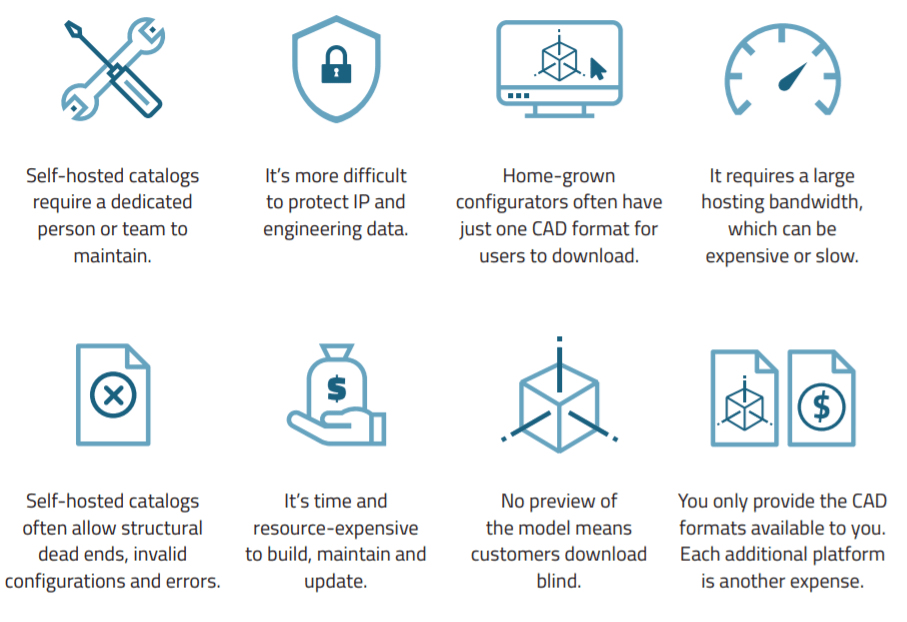
3. Neutral cloud CAD model delivery
In this method, a third party helps the manufacturer provide 3D CAD & BIM downloads from their website via a provider-hosted solution.
The third-party provider takes the manufacturer’s existing CAD and BIM files and hosts them on their own platform. These can be “sales models” or full working models depending on what the manufacturer provides. The models are then accessible to users from that platform and (possibly) through the manufacturer’s website via a CAD catalog. This third party is often a CAD or BIM software provider and has its own CAD download portal where it publishes the manufacturer’s part catalog.
Depending on the provider, this CAD configurator / catalog could live in an iframe, which is embedded on the manufacturer’s website. This is similar to embedding a YouTube video or social post on a website, only this CAD catalog requires much more bandwidth. More often, these are hosted on the provider platform only, and customers must follow a link from the manufacturer website.
Benefits of a Neutral Cloud solution for delivering CAD content
This method is an efficient way for you to provide CAD downloads from your website without having to handle the challenging and resource-heavy maintenance of a DIY catalog. Since the third-party provider hosts the catalog on their platform, they ultimately responsible for storing and maintaining the catalog and CAD files.
With the third-party provider, you reach more customers. The CAD catalog lives on either the manufacturer’s website and/or the provider’s CAD download portal. Many engineers and designers who exclusively use that particular CAD tool know they can always find a native CAD download in these CAD download portals. Now, your products are on that portal and readily available for them to download.
This interface also creates a great online experience for the manufacturer’s customers without weighing heavily on your website’s bandwidth or your engineering team. The CAD catalog allows users to find, configure and download 3D models on-the-fly, which cuts down on their design time and streamlines the process for downloading custom CAD models.
Problems with Neutral Cloud delivery of CAD content
In order to use this method, you must give up some control of your CAD model delivery. This is not to say that third-party providers can’t protect I.P. but rather you don’t have as much personalization and oversight control. Typically they share the exact model the manufacturer provided to them.
Similarly, the third-party provider could decide to change a feature of its CAD catalog solution, reorganize its CAD download portal or shut down entirely. In which case, you have little-to-no control and can lose your CAD deliverability if you go with an untrustworthy vendor.
A key issue with this solution is its limited ability to provide native CAD or BIM downloads in a variety of formats. Most third-party providers only enable users to download product models in one or a few file formats. As native CAD downloads are a growing expectation for online engineers, this will be a big differentiator between you and another manufacturer.
Product changes and updates can also be cumbersome. While you are no longer responsible for making the specific changes to the CAD models, you must ensure that a change to a product family is reflected in every CAD model everywhere those product models are available for download. With the neutral cloud method, that means someone must go into each CAD model and make the update.
Read More:
-
Why Manufacturers Need an Online Product Catalog [Infographic]
-
Meet the Needs of Engineers Today with On Demand Data Access
-
What Is DCX / Digital Customer Experience?
4. Native cloud approach to CAD model delivery
Finally, there is the native cloud method of CAD delivery. This method is very similar to the neutral cloud method but with fewer limitations and a more streamlined maintenance program.
In the neutral cloud method, a third-party simply transforms the manufacturer’s existing models into “sales versions” the manufacturer can send via a few select CAD formats. But in the native cloud method, the third party recreates those CAD models and builds a “recipe structure” or pilot model. This pilor model can be easily configured and adjusted for each product configuration and other parts within the product family, which enables the manufacturer to provide a “sales-ready” model to customers in any CAD or BIM format.
In summary, the difference lies in how the CAD product models are built, which impacts how the manufacturer can use and maintain its CAD & BIM catalog.
Benefits of a Native Cloud solution for CAD content
With a native cloud solution, you have more opportunities to deliver CAD models to engineers without the workload that comes with a DIY solution.
The third-party publishes and hosts a “master catalog” on its platform, which serves as the single-source for all current CAD product models. You then publish this catalog on your website, CAD download portals, distributor sites, USB drives and anywhere else you provide product samples.
Unlike the neutral cloud solution, this master catalog structure enables you to make product changes one time, which are automatically reflected anywhere the CAD catalog was republished.
This solution also lets you provide all six major CAD software platforms, plus 150 other platforms from the catalog. Native cloud can also support 3D visualization, PDF product datasheets and 2D/3D neutral file formats.
Problems with Native Cloud delivery of CAD content
Like the neutral cloud solution, you don’t have 100% control over the deliverability of your CAD models. You must decide if relying on a third party to provide CAD & BIM is a worthwhile partnership compared to a home-grown solution.
Because of the advanced functionality of native cloud, these solutions are slightly more expensive upfront. Of course, quoting a CAD catalog depends on several factors, including the product geometry and quantity, so the actual price will differ for each manufacturer.
Before letting the cost deter you away from this option, consider how much it costs to achieve the functionality of native cloud with a DIY solution:
- CAD software for top 6 CAD formats = $1,500/year/format = $9,000/year
- An engineer to maintain the solution = $50,000/year
- A large hosting plan to support the catalog = $2,500+ / year
- The time it takes to build the home-grown solution: $$$
All things considered, you must make the best choice for their company. However, choosing to not provide digital product models will always be the wrong choice for your customers.
Questions to Ask Before Providing 3D CAD to Your Audience
You want to find the best way to provide 3D CAD models to online customers. But, how do you know what functionalities your customers want most and will keep them coming back?
If you want to create the best digital customer experience and meet the on-demand needs of engineers, we believe the product configurator is the answer.
Product configurator (aka “online CAD catalog” or “digital parts catalog”): the online library of a supplier’s standard parts and machines that engineers and designers can view and purchase for their designs.
Providing customers with online 3D CAD downloads through an online configurator is the most efficient way to meet customer demands and stay relevant in the digital industry.
With a product configurator, your customers can:
- Configure your products in real-time
- See the orderable part number for that exact product
- See what that configuration looks like in a 3D preview display
- Download a representation of the product in a CAD format that matches their CAD system
A great 3D catalog makes it easy to understand and specify your products and get them “designed in” to the customers’ projects. This removes the need to flip through the pages of a paper catalog to find sizes and options, to study and understand your part number or to draw the product themselves.
Delivering 3D CAD models on-demand with a product configurator
Here are five more benefits of choosing a product configurator to deliver 3D CAD models:
- Give customers around-the-clock access to your products worldwide.
- Enable designers to easily find, preview and configure the exact product they need in their preferred CAD format.
- Provide salespeople a real “leg up” against the competition with a digital, on-the-go product library, product previews and lead-tracking capabilities.
- Share an interactive 3D preview of the configured product that’s always the exact, specified part.
- Track the contact information of your next new prospect through CAD downloads and build your list of qualified leads.
When is it time to question what you provide now?
What are the red flags that tell industrial marketers it’s time to use a professional service? The situations are different for each industry, but these are some sure-signs that it’s time for you to look for a CAD catalog provider:
- Your competitors have product configurators and CAD, and they’re outselling you.
- Your customers are requesting CAD models more often.
- You’re hearing from online customers less in general.
- You need a way to provide CAD downloads and digital product samples to customers faster.
- You want to protect your IP while still giving customers the product data they need.
- It is always a struggle to keep up with changes in technology.
Questions to ask your next digital catalog provider
The right 3D product configurator and e-catalog can make a big impact on business and sales. Choose wisely.
- How easily can customers specify products on my website and within the product configurator?
- How does your configurator prevent the engineer from building invalid parts?
- What technology architecture is your platform based upon?
- What happens when there are new browser updates, CAD software versions, and technology changes?
- What updates did you make to your solution last year?
- Which web browsers does your configurator and 3D viewer support?
- Does your platform deliver true native CAD files or just neutral files?
- Do you include any hosting or service fees?
- How flexible is your platform if I need to grow and expand my offering?

PART 3
Getting the Most from Your 3D CAD Models
Industrial marketing content is more than just blog posts, whitepapers and downloadable tools. Content is any tangible or digital asset you are willing to share with visitors. Industrial manufacturers are beginning to realize there is marketing wealth in their engineering library.
This chapter will cover how you can stretch the marketing mileage from your catalog of 3D CAD models.
Reach More Users to Sell More Products with 3D CAD Content
Part Communities and Download Portals to Provide 3D CAD models
When it comes to the number of online places you provide CAD models of their products, more is more. Providing your products on popular CAD/BIM download portals is an effective way to reach more engineers and architects who are looking for product samples online.
A part community, or online CAD portal, is an online resource where millions of engineers go to source parts and get new design ideas.
These online communities are normally associated with a magazine, an industry or a specific CAD system. The CAD models there are professionally designed and certified by the manufacturer. No “user-submitted content” or “crowdsourcing,” – these models are certified, current and accurate by the component manufacturer.
Designers around the world use CAD/BIM forums and download portals to discuss design issues, share ideas, offer solutions and find products to download into their designs. Many of these CAD & BIM forums and communities serve targeted subsets of users.
Reaching these designers is just as important as providing multiple CAD & BIM formats because these buyers are loyal to their CAD forums. By placing their products on these download portals, you make it that much easier for engineers to download their products.
Beating the Firewall: Reach OEM Engineers by Providing 3D CAD model
Take a look at the chart below, taken from our 2017 Industrial Sales and Marketing Report:
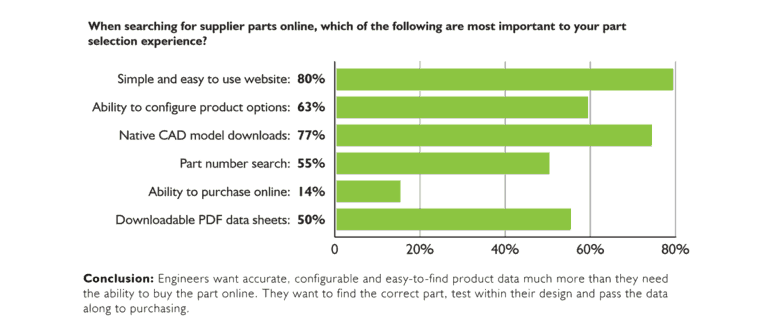
Engineers were asked which website features influenced them the most when selecting supplier parts online. The results revealed that the most important features are a “simple and easy to use website” and “native CAD model downloads,” as well as the quality of available product data.
In short: Engineers want a simple path to get the accurate product information they need so that they can get back to work.
But what about the engineers working at large OEMs or the government?
Often times, these engineers are not allowed to go online to search for parts to spec into their design. Rather, their employer requires they find a part within their part library or specific, offline part database. These are potential customers who need parts, too, so how can you make your products accessible to them?
The best way to get products in front of these engineers is for you to publish your CAD models on the enterprise solutions OEMs use. When looking for a CAD download provider or third-party to build a CAD catalog, you should ask that provider what/if they support catalogs republished on enterprise solutions.
This solution also helps the OEM engineers. If they cannot find the part they need for their design, they often redraw parts (sometimes even redrawing parts they already have!). But with more products in the native format they need available in their part database, these OEM engineers reduce errors and save time on their design.
Read More:
-
Content Marketing Strategy: How to Make Online Content Engaging for Engineers and Industrial Buyers
-
Reap the Sales Benefits of Content Marketing with an Online CAD Configurator
-
Content Syndication: Reach a Broader Audience with Online CAD Models in More Locations
Power the Sales Team and Distributor Network
How Providing 3D CAD Models becomes a “Sales Enabler”
While many companies are willing to spend money on marketing efforts, those efforts aren’t directed to the areas with the most payoff. Perhaps their efforts are in the right places (i.e. blogs and email marketing), but the balance of the marketing mix isn’t right, and visits are not converting to leads or sales.
To align sales and marketing and to improve the teams’ overall sales velocity, manufacturers can turn to their 3D CAD catalogs.
Using the Digital Parts Catalog as a Sales Enablement Strategy
For manufacturing companies, this “CAD Content Marketing” needs to be the area of heaviest marketing effort, since engagement is more traceable and since it has a higher ROI than any other medium. Plus, it’s a marketing asset that most B2C companies would kill for – a free download that converts to a physical sale 85% of the time. That’s marketing gold.
See what Achinta Mitra, founder and author of the Industrial Marketing Blog, has to say about 3D CAD models and your marketing strategy:
“Inbound marketing tactics such as SEO and other current marketing strategies do fill the top of their sales funnel but converting leads to sales opportunities takes too long for their liking. Think of 3D CAD models and 2D CAD drawings then as supercharged content assets for moving leads closer to the RFQ stage much quicker than any other type of content resource…”
“…they help get manufacturers’ or distributors’ parts ‘designed in’. Design wins lead to prototype and production orders. That’s why I like to call them ‘sales enablers’.”
Achinta Mitra, Industrial Marketing Today
Competitive Advantage of Providing 3D CAD Models
Providing 3D CAD models from their website isn’t just a market-sales tool for component manufacturers. It’s a competitive advantage.
Here’s more powerful insights from Mitra, published on his Industrial Marketing Blog:
“CAD can also be a powerful differentiator for precision machining shops andfabricators. They can move up the value chain by offering CAD/CAM-related services to OEMs that are always looking for ways to reduce production costs and shorten their time to market…”
“… [companies investing in the latest CAD technology] are in a much better position to offer value engineering and DFMA (Design for Manufacturing and Assembly) services to become the preferred manufacturing partner instead of being a supplier that is constantly competing on price.
Overall, I think 3D CAD models and 2D drawing are extremely effective in generating more sales-ready leads for manufacturers and industrial distributors.”
Achinta Mitra, Industrial Marketing Today
Mobile Apps for On-the-Go Product Access
CAD download apps are growing in use and popularity among engineers. In fact, research from IEEE GlobalSpec found that use of mobile devices and apps by engineers for work-related tasks increased significantly over the past decade. Their primary uses: reading email/articles and conducting product searches.
Mobile CAD apps can also be used by your sales team. These apps enable sales reps to adapt to their new role in the buying process: deliver value and enhance the customer’s digital experience.
With on-the-go CAD models and 3D visualization of their company’s products, the sales team can show-off products anywhere: at trade shows, on the shop floor, in meetings and more. Using the app, the salesperson can work with the customer as a valued expert to help guide customers to the part they need. Salespersons can even build the product specifications for customers and send them the download on the fly.
Embed Your CAD Content and 3D Viewer on Distributor Sites
Manufacturers’ relationship with distributors is symbiotic. The manufacturer wants to work with the best distributor to get their products in front of more people; distributors want to work with the manufacturers that sell the product engineers want most.
If you and your distributor are teammates in boosting product sales, why shouldn’t you share the same tools?
It’s possible for manufacturers to embed their 3D CAD catalogs on distributor websites. We call this concept “one to many”. By authoring the product catalog one time as a “master” catalog, industrial manufacturers can then use that single source of data to output their catalog to their product pages on distributor websites.
This enables distributors to provide enhanced product data and a better online buying experience from the manufacturer’s product pages:
- Enhanced product information (rich data)
- Up-to-date CAD data
- 3D product visualization
- The manufacturer and product metadata
- Free CAD or BIM model downloads to customers
- PDF product datasheet with a 3D viewer
Why should manufacturers do this?
You have your digital CAD catalog on your website – why do you need it on distributor sites?
If your answer to the first question about where your online product sales come from was distributor sites, you already have an incentive. Here’s more justification for boosting your product data on distributor sites:
![]()
- Engineers still use distributor websites for product searches.
Today, the typical path to purchase is rarely a straight line. Engineers bounce back-and-forth from distributor websites, third-party vendors, component suppliers and the manufacturer’s website before making a purchase.
The bottom line is you miss out on sales if you disregard distributor sites.
To sell more products online, you must understand their buyers’ journey and where they go to purchase products. That means not just answering customers’ needs and pain points but also being available where they go to meet those needs.
![]()
- It’s a differentiator for both manufacturers and distributors.
Online engineers want to see products with rich content.
Therefore, they will choose a product from Manufacturer A with rich content over a product they can’t from Manufacturer B. Similarly, engineers will go to Distributor A for product searches if they know they can get the exact product they need if Distributor B doesn’t offer it.
Delivering a free CAD or BIM download to test in their design helps engineers and integrators determine whether or not to purchase that product. It’s no wonder engineers prefer products from manufacturers that provide this – it’s insurance for the engineer that the part they see is the part they get.
![]()
- Rich product data drives sales for the manufacturer and reseller.
Online buyers are creatures of habit. Give a customer exactly what they want, how they want it, and when they ask for it – you’ve won their future business. That’s why a good digital customer experience goes a long way – and a negative experience is so harmful.
Engineers and architects will return to manufacturer and distributor websites that deliver the products they need quickly and in the right format. And, they’ll tell their engineering friends and colleagues where they go to get parts.
Just one product download can result in many product purchases because the engineer or architect will go back to that trusted product for future designs. According to our Industrial Sales & Marketing Report, one 3D product download averaged to 16.7 purchased parts, highlighting the ROI for 3D CAD models.
But remember, 88% of online customers are not likely to return to a website after a bad experience. Manufacturers need to consider the DCX anywhere they provide 3D CAD models, not just their own website.
Provide a Conversion-Driving Digital Customer Experience by Providing 3D CAD Models
You know if you want to drive more leads and sales, you must provide an exceptional digital customer experience.
You need to find creative ways to engage with engineers while still giving them the self-serve, on-demand experience they expect. Although delivering free product samples was once a great way to do this, today’s engineers don’t have the time to wait for a sample part delivery.
While some manufacturers promise to send a physical product sample to customers within 24 – 48 hours, you can give engineers the sample they need instantly.
The online configurator is fast, easy and self-serve, offering the customer more information for their purchasing decision whenever they want it.
With an online configurator, engineers can access and customize your parts in real time before downloading a free CAD model of their designed part.
Since the online configurator lives on your website, your website because the new favorite “vending machine” for online components. Like any other vending machine, the online configurator gives engineers the power to choose the exact product they need for their design. However, the configurator exceeds vending machine standards and customer expectations by making those products free and downloadable as a native file.
Here are other ways in which the online configurator naturally creates a better DCX:
- Speeding up the design process
- Improving accuracy across designs
- Empowering the buyer with more information and more control
- Creating an easy-to-use interface streamlined to purchasing
Integrate Your Configurator with Marketing Automation & CRM System
If someone downloads a 3D CAD model from your website, they’re essentially raising their hand and saying, “Sell to me!”
So, how are your going to track (and follow-up on) your CAD & BIM downloads?
Connecting your CAD downloads with an existing contact management system and marketing automation is a sales-enablement must-have.
For those manufacturers that use a product catalog to deliver 3D CAD to customers, tracking is easy. A premium 3D product catalog enables manufacturers to directly link their existing marketing automation and CRM systems to the new catalog. This means industrial marketers can build a sales enablement process from their 3D CAD & BIM downloads and measure the ROI of their models.
The result is a self-sufficient cycle of data collection, contact management and automated actions that lets manufacturers sell more products at a higher velocity – driven by the 3D CAD downloads.
Here’s how to do that:
- A new lead downloads a product from the online CAD catalog.
- The CAD catalog sends the designer the 3D product sample and sends the new contact information and activity to your marketing and CRM system.
- You send a beautiful, automated email to the new contact, confirming their download and offering assistance for more downloads and purchasing information.
- An activity is logged when the designer (or their purchasing department) buys that product.
- Future downloads that customer makes are logged as activity in the CRM system and tracked by your CAD catalog.

PART 4
Take the Next Step Toward Providing 3D CAD Models
Now that we’ve covered everything there is to know about providing 3D CAD models to customers, industrial marketers can build or revise their content marketing strategy around 3D product downloads.
Take the next step toward doubling your qualified marketing leads and sales.
Schedule a demo with our eCATALOGsolutions experts today!
Not ready to talk to a person? Download our ebook to learn how industrial manufacturers are building a remarkable digital customer experience with 3D product downloads and CAD configurators.
Get the Free eBook
See how the world’s top manufacturers sell more products by creating an exceptional digital customer experience.
Download Now
